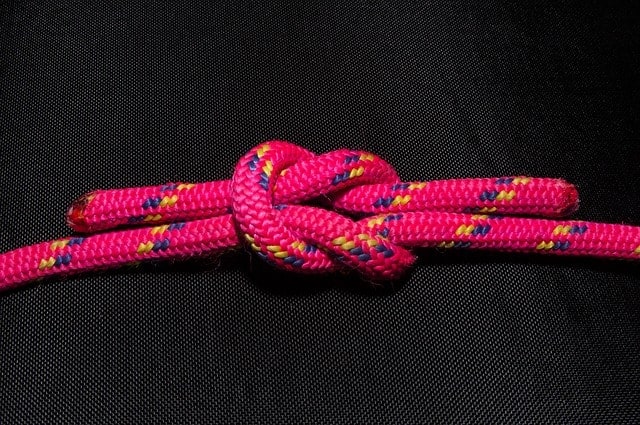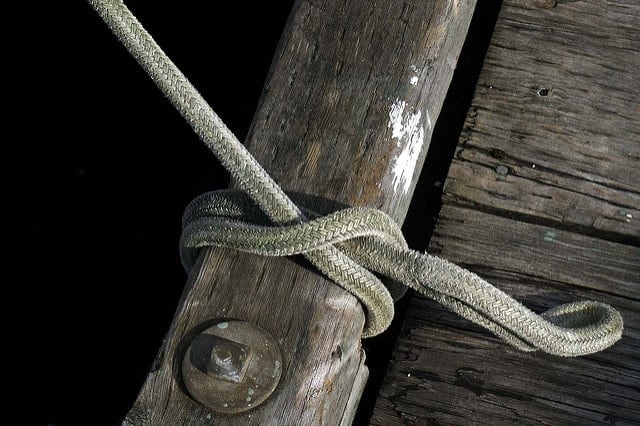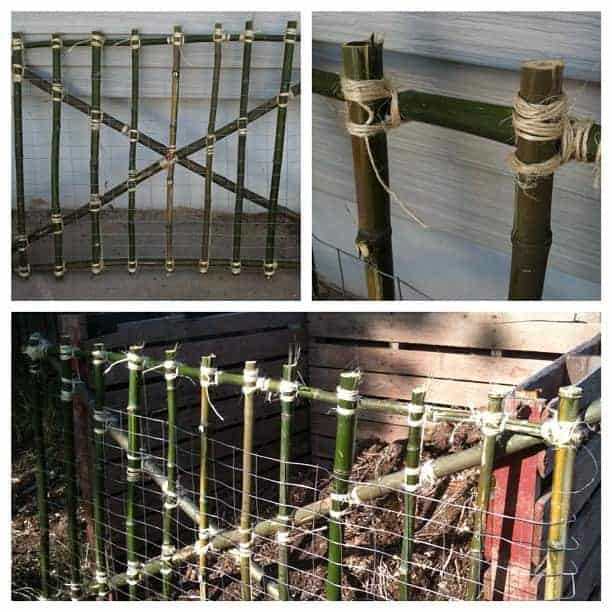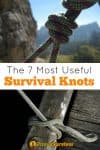You’ve probably heard that rope is one of the essential pieces of survival gear to keep in your Go Bag or to bring when going camping (read about types of rope and uses for survival rope).
But what doesn’t usually get mentioned is that you actually have to know how to use the rope to utilize it for survival.
 Titan Paracord
Titan Paracord
Improperly tied rope could result in disaster – like when your tarp shelter comes untied and cashes down on you in the middle of a thunderstorm, or the boat you tied up gets loose and floats downstream.
There are thousands of different ways to tie rope. You probably aren’t going to learn all of them, so start with these 7 most useful survival knots.
Knot Terminology
Before we get into the knots, let’s learn some quick terms.
The word “knot” is usually used in a generic way to describe some entanglement of flexible material (such as rope).
However, there are a lot of specific terms used to describe these entanglements.
- Knot: When the two ends of the same rope are secured together.
- Hitch: When one end of the rope is attached to a post, ring, or another rope.
- Bend: A type of knot that connects two separate ropes
- Lashing: When the rope is used to secure two or more spars (poles) together
Knots, hitches, bends, and lashing all have their purpose. There are also many subcategories of these types of survival knots.
You should make a point to learn some of each if you want to be prepared for all types of survival situations.
1. Square Knot (aka Reef Knot)

The square knot is straightforward to tie. It also benefits from being flat when tied, making it suitable for certain purposes where a protruding knot wouldn’t work. However, it isn’t very secure – so you don’t want to use this survival knot to tie critical items.
Use the knot for tying your rope around an object. Do NOT use it for tying two pieces of rope together. Do NOT use the square knot for load-bearing situations.
Why is the square knot included if it isn’t very secure?
Because knowing how to tie this knot lays the foundation for tying other important knots.
Uses for the Square Knot
- Tying rope around a static object/s.
- Tying bandages
- Reefing and furling sails
- Tying plastic garbage bags shut (knot forms a handle when you use it this way)
How to Tie the Square Knot
To tie the square knot, remember “right over left, left over right.” Here’s a video showing you how to tie the survival knot.
2. Clove Hitch

This is the knot you will probably use more than any other survival knot. It also forms the basis of many other knots, such as lashings.
The clove hitch is a type of jam knot meant for temporary uses. It won’t be secure unless you have a load pulling on both sides. The greater the load, the more secure the clove hitch becomes. If you remove the load from one side, then the clove hitch will easily come undone.
A nice thing about the clove hitch is that you can tie it before you need it, such as making the clove hitch in advance and then slipping it over a fence pole.
Uses for the Clove Hitch
- Hanging a bear bag with the PCT method
- Securing a survival shelter
- Securing rope to tree or post quickly
How to Tie the Clove Hitch
3. Square Lash

Square lash knots are used to join sticks or poles at right angles. This is very useful if you ever need to make a survival shelter or build a fence.
The square lash is very strong and can be load-bearing, so it is even used to make scaffolding.
Uses for the Square Lash
- Securing two poles at right angles
- For making frames and shelters
- For making fences
- Use when the poles may slide over each other when under load
- *Use the diagonal lash if the poles tend to spring away from each other when under load
How to Tie a Square Lash
4. Shear Lash (aka Sheer Lash)
If you need to secure two poles together, and both poles will be load-bearing, then the sheer lash knot is the right choice. You can also use it for securing two poles end-to-end to make one long pole.
Once you’ve made your sheer lash knot, you spread the two poles apart, such as when making an A-frame for a survival shelter. You might need to shove a jam stick into the space to make the legs more secure.
Uses for the Shear Lash
- Making A-frames
- Fixing broken poles
- Securing a piece to a weak pole
- Increasing length of a pole (though a round lashing is probably better for this)
How to Make a Shear Lash
5. Bowline Knot
The bowline is considered the “king of knots.” It is a type of “loop” knot, and its popularity comes from it being so easy to tie.
When it is under load, the bowline is very secure. Once the load is removed, the knot is easy to untie.
Be warned that it is easy to tie the bowline incorrectly! When using the bowline for uses like climbing, you should make a safety knot. Or, better yet, use the threaded figure eight knot for climbing!
Uses for the Bowline Knot
- Making a loop at the end of a rope
- Linking together two ends of a rope
- Fastening a line to a pole
- Attaching a rope to a tree for climbing
- Securing a trap
How to Make a Bowline Knot
6. Carrick Bend
The Carrick bend is used to tie two ends of rope together. It works best when the ropes are of similar size.
The Carrick bend is very secure, but you must make sure that the ends of the two ropes are opposite each other diagonally when tied, or else the ropes could slip, and the bend come undone! When the load is removed from the bend, it is easy to undo.
Uses for the Carrick Bend
- Joining the ends of two ropes together
- Making nets and mats
How to Tie the Carrick Bend Knot
7. Distel Hitch
The distel hitch is a type of “slide and grip” knot. This means it will slide around on a rope in one direction but grip securely when pulled in another direction.
Climbers commonly use these types of knots, but they can also be used for safely moving large loads up or down a rope. There are also many other types of slide and grip knots, but the distel hitch has the advantage of being easy to tie.
Uses for the Distel Hitch
- Repelling and climbing
- Moving heavy loads up/down a rope
How to Tie the Distel Hitch
Have you used any of these knots? What’s your favorite knot?



thank you great primer to start me on my bushcraft experience
Knots are nothing short of amazing, innovative and clever. Truly a “form follows function” application.
This was EPICCCCCCCCCCC!!!!!!!!!!!!!!!
“very useful”
This is great article very informative & useful also. I like such informative things.
Pretty epic if I do say so myself
Great useful article